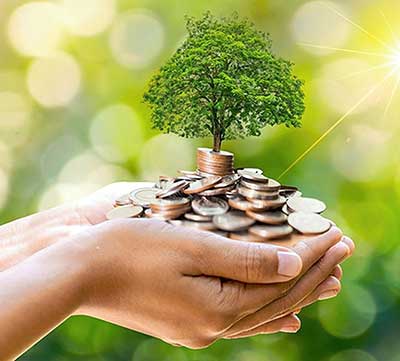Date: 01/02/2023
Relevance: GS-3: Indian Economy and issues relating to planning, mobilization, of resources, growth, development and employment.
Key Phrases: Sovereign Green Bonds (SGrBs), inter-governmental groups, multiple price-based methods, Fund Utilisation, ESG (environment, social and governance).
Context:
- The government began the sale of its Sovereign Green Bonds (SGrBs) worth Rs 8,000 crore recently. The auction was conducted through multiple price-based methods.
- The success of the maiden sovereign green bond (SGrB) auction of the Centre signals a healthy appetite for these instruments from investors.
What are Sovereign Green Bonds?
- A bond is an instrument to raise debt.
- When these bonds carry guarantees related to the repayment of principal and payment of interest by the sovereign or the government, they are called Sovereign Green Bonds (SGrB).
- They are issued by any sovereign entity, inter-governmental groups or alliances and corporates with the aim that the proceeds of the bonds are utilised for projects classified as environmentally sustainable.
- The proceeds generated from the issuance of such bonds will be deployed in Public Sector projects which help in reducing the carbon intensity of the economy.
- A project is classified “green” on the basis of four key principles.
- These include:-
- encouraging energy efficiency in resource utilisation,
- reducing carbon emissions and greenhouse gases,
- promoting climate resilience and
- improving natural ecosystems and biodiversity, especially in accordance with SDG (Sustainable Development Goals).
Why are these bonds important?
- Threats of Climate Change:
- Over the last few years, Green Bonds have emerged as an important financial instrument to deal with the threats of climate change and related challenges.
- According to the International Finance Corporation (IFC), a World Bank Group’s institution, climate change threatens communities and economies, and it poses risks for agriculture, food, and water supplies.
- A lot of financing is needed to address these challenges.
- It’s critical to connect environmental projects with capital markets and investors and channel capital towards sustainable development – and Green Bonds are a way to make that connection.
- Platform to engage in good practices:
- Green Bonds offer investors a platform to engage in good practices, influencing the business strategy of bond issuers.
- They provide a means to hedge against climate change risks while achieving at least similar, if not better, returns on their investment.
- In this way, the growth in Green Bonds and green finance also indirectly works to disincentivise high carbon-emitting projects, as per the IFC.
- Fund Utilisation:
- SGrBs differ from other government bonds in the manner of fund utilisation. Funds raised from SGrBs have to be earmarked for public sector projects which reduce carbon intensity in the economy.
- India’s Commitments:
- Given the commitments made at COP26 including ensuring 500GW of power production from renewable energy by 2030, reduction of the carbon intensity of the economy by 45 per cent from 2005 levels by 2030, and net zero emission by 2070, the country needs enormous funds for setting up clean energy infrastructure.
- The SGrBs will help ring-fence funds for these areas, helping expedite these projects.
- Besides helping achieve climate control goals, SGrBs help investors meet their ESG (environment, social and governance) mandates too.
- Secure Bonds:
- They are very secure bonds as the principal as well as the interest payment is guaranteed by the central government.
Cons of Sovereign green bonds:
- Bonds could become illiquid: These bonds could become illiquid as the issuances will be lesser than non-green bonds and hence may be difficult to sell if the investor needs to sell the bond before maturity.
- Lower Returns: Green bonds traditionally are issued globally at higher premiums leading to lower returns. Since they are being issued with a sovereign guarantee, returns could be even lower.
Do You Know?
- According to Bank for International Settlements (BIS) database, SGrB is part of Green, Social and Sustainability (GSS) bonds.
- In 2007, the European Investment Bank issued a Climate Awareness Bond, the world’s first green bond.
- The World Bank’s first green bond, in November 2008, was the first to define project eligibility and provide assurance, through a second-party opinion provider, that eligible projects would address climate change.
- The first sovereign green bonds were issued by Poland and France as recently as early 2017.
- At end-2019, the share of sovereign issuers in total outstanding GSS bonds was only 4.2 per cent, but it increased to 7.5 per cent by end-June 2022.
Conclusion:
- Many investment funds would be glad to lock in to these investments for the long term, despite the lower interest rates.
- The Centre can raise funds at a lower cost compared with regular government bonds.
- The Centre, however, needs to adhere to the SGrBs framework adopted in November last year i.e in 2022 to ensure that the credibility of these instruments is retained.
- The Centre needs to be ready to withstand the scrutiny of both domestic and foreign investors.
Source: The Hindu BL
Mains Question:
Q. What are Sovereign Green Bonds? Discuss the significance of these bonds. (250 words)








